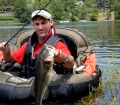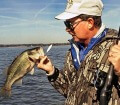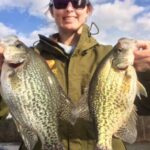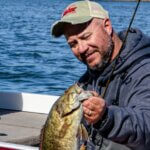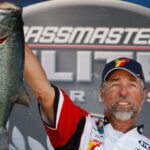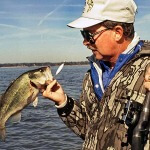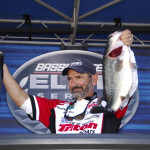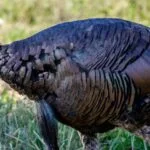John’s Note: If you live in a state where the lakes remain frozen in February, these techniques for catching February bass and crappie certainly won’t work. But if your state has open water during the month of February, the size and the number of bass and crappie you take may surprise you.
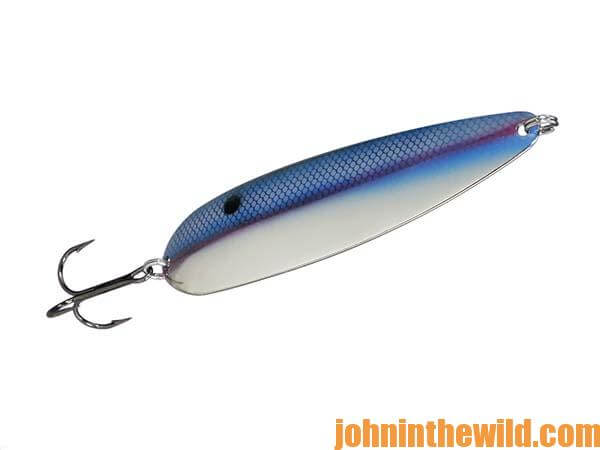 Ken Cook, a leading tournament angler, also has a degree in fish biology.
Ken Cook, a leading tournament angler, also has a degree in fish biology.
Cook tells us that when the jigging spoon doesn’t work in February for bass to, “Cut off your jigging spoon, if you’ve located bass schooled-up in the winter and have tried everything you know to do with the jigging spoon to catch bass. Next go to lighter line, and start fishing the flutter or shoehorn type of spoon. I hate to fish this kind of spoon, because feeling the bite is hard. I rarely can see the bait falling, and I miss as many – if not more bass – on this type of spoon as I do on the jigging spoon. The bite will come when the flutter or the shoehorn spoon is falling. So you must have slack in your line to let the flutter spoon fall. I fish the flutter spoon instead of the jigging spoon on slow-biting bass in the winter because the flutter spoon has more action and allows the bass to see the bait moving for a longer time than the jigging spoon does.
To be an effective flutter-spoon angler, you must see the strike on the line before you feel it.
If you wait to feel the strike, more than likely you have lost the bass. I only use the flutter spoon when the weather is extremely cold, and  the bass won’t bite my jigging spoon. Without a doubt, fishing the jigging spoon in the dead of winter is one of the best tactics I know for catching wintertime bass.”
the bass won’t bite my jigging spoon. Without a doubt, fishing the jigging spoon in the dead of winter is one of the best tactics I know for catching wintertime bass.”
Cook also suggests that for the most bass-fishing success in the winter, “Find lakes that are heated by nuclear-power plants. The water is so much warmer in these kinds of places than anywhere else. Too, you’ll find the bass more active. “I have a couple of favorite wintertime places here in Oklahoma where I live. One is Sooner Lake, which is heated by the local power plant. I also enjoy fishing several spots in Texas where the water is warmer. Other than lakes with nuclear-power plants on them, I recommend you fish deep, clear mountain lakes like the Lake of the Ozarks in the winter. You just can’t locate bass in muddy, cold water. If the water is clear, you’ll have a better chance of pinpointing bass, which is more than half of the game.”
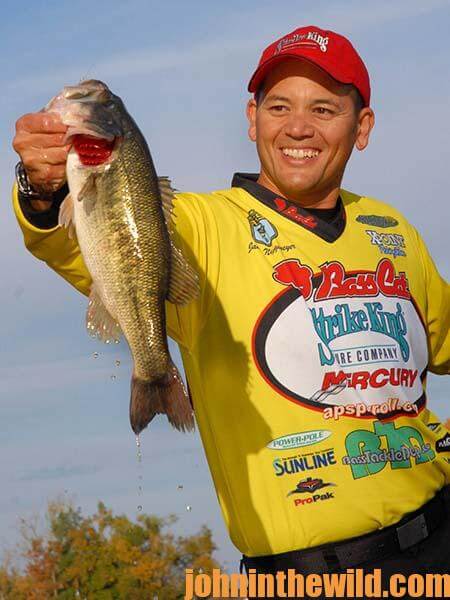 Most anglers don’t fish buzzbaits, dull 3/4-ounce jigging spoons or flutter spoons or hunt for nuclear bass in February. However, as you’ve learned in Days 1 – 3 this week, these tactics will pay February bass dividends.
Most anglers don’t fish buzzbaits, dull 3/4-ounce jigging spoons or flutter spoons or hunt for nuclear bass in February. However, as you’ve learned in Days 1 – 3 this week, these tactics will pay February bass dividends.
To learn more about bass fishing, get John E. Phillips’ Kindle ebooks, “How to Bass Fish Like a Pro,” “How to Win a Bass Tournament” and “Catch the Most and Biggest Bass in Any Lake: 18 Pro Fishermen’s Best Tactics.” Click here to get these books.
About the Author
John Phillips, winner of the 2012 Homer Circle Fishing Award for outstanding fishing writer by the American Sportfishing Association (ASA) and the Professional Outdoor Media Association (POMA), the 2008 Crossbow Communicator of the year and the 2007 Legendary Communicator chosen for induction into the National Fresh Water Hall of Fame, is a freelance writer (over 6,000 magazine articles for about 100 magazines and several thousand newspaper columns published), magazine editor, photographer for print media as well as industry catalogues (over 25,000 photos published), lecturer, outdoor consultant, marketing consultant, book author and daily internet content provider with an overview of the outdoors.

